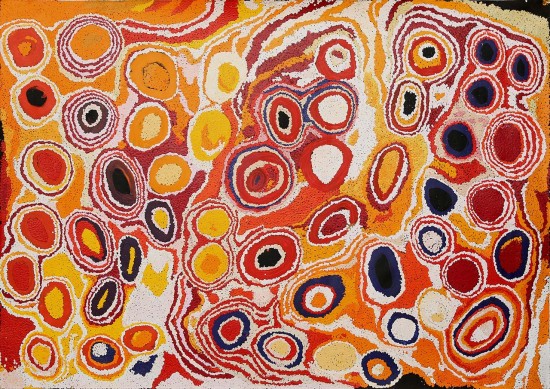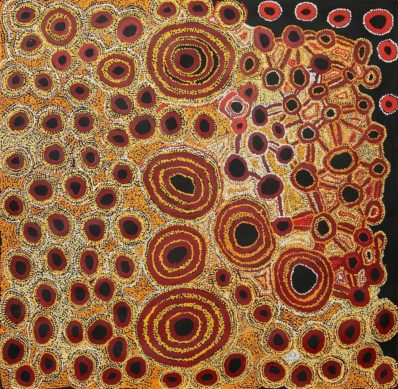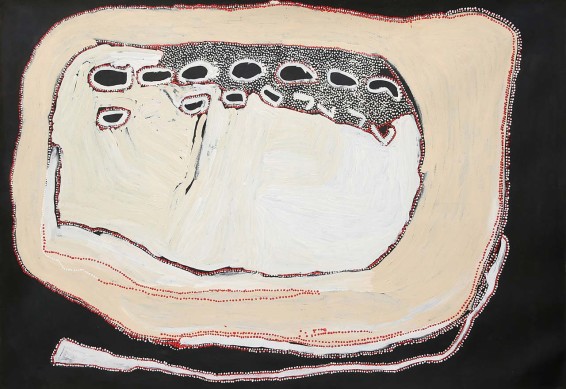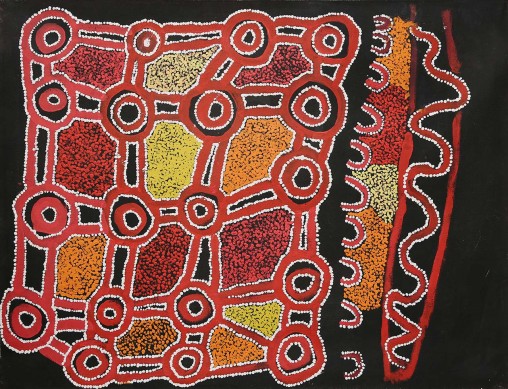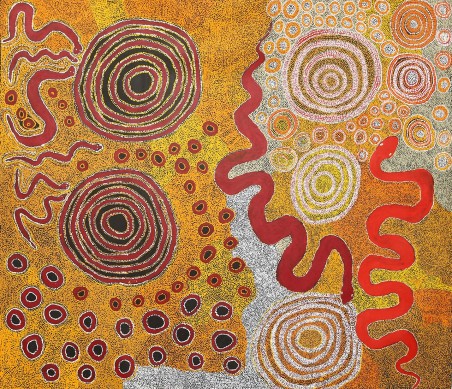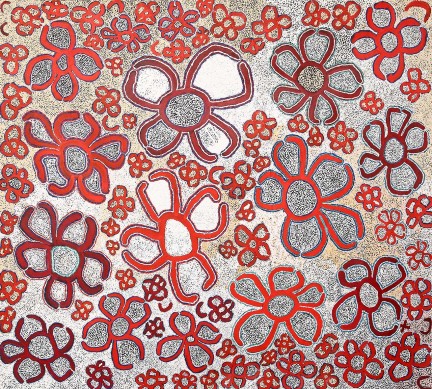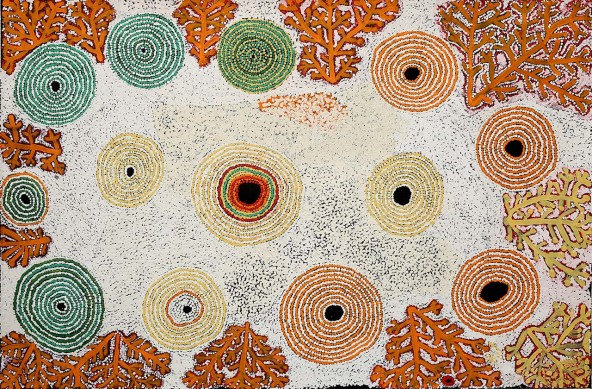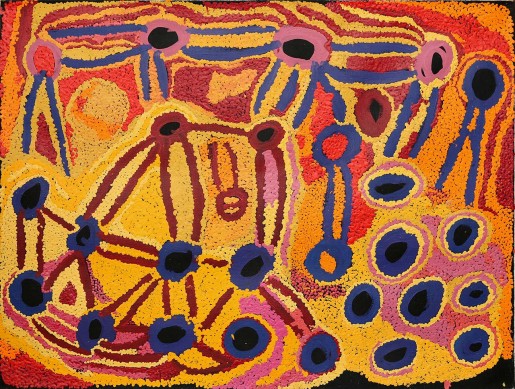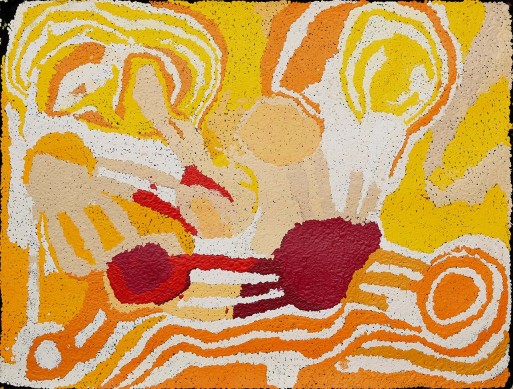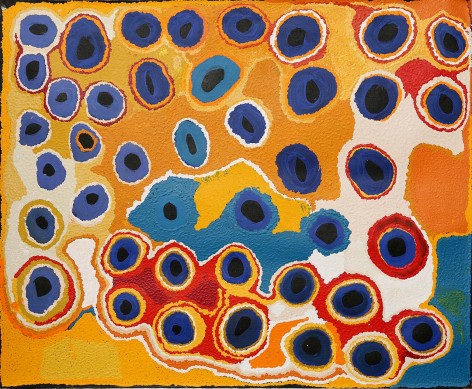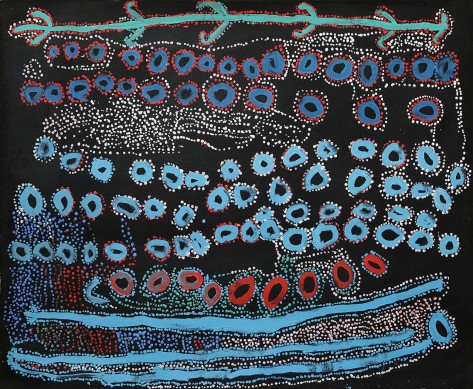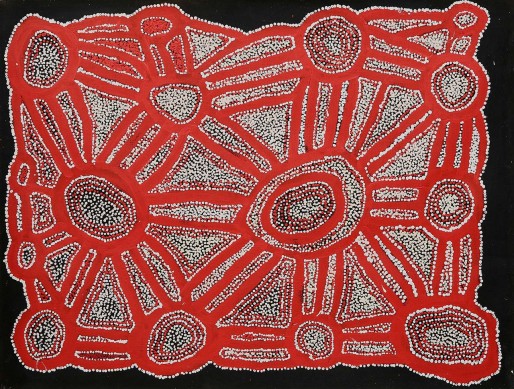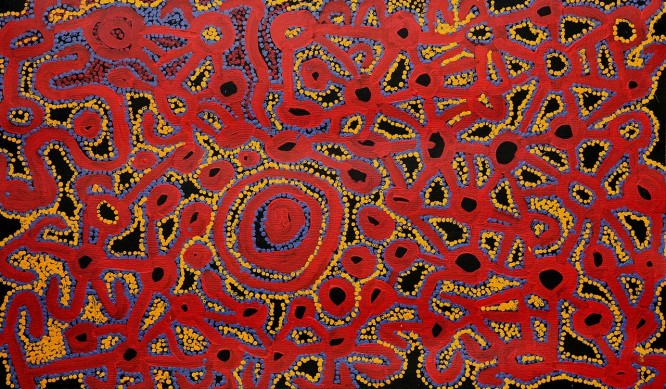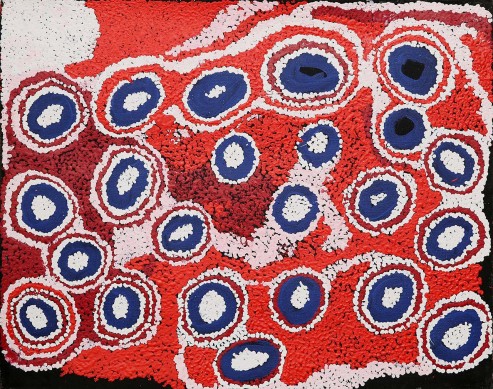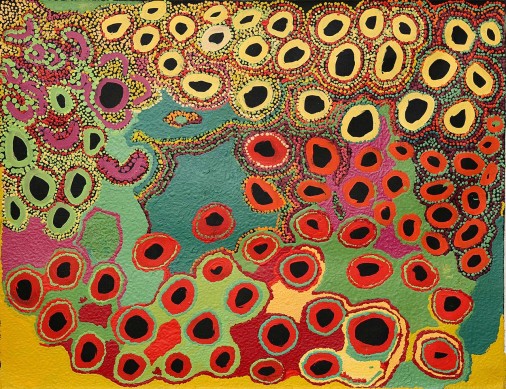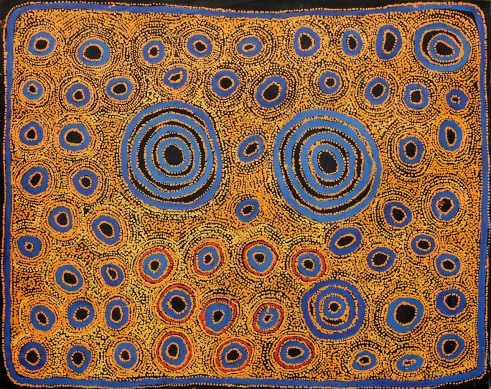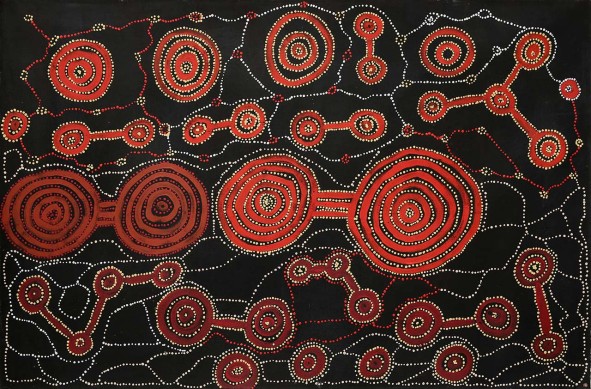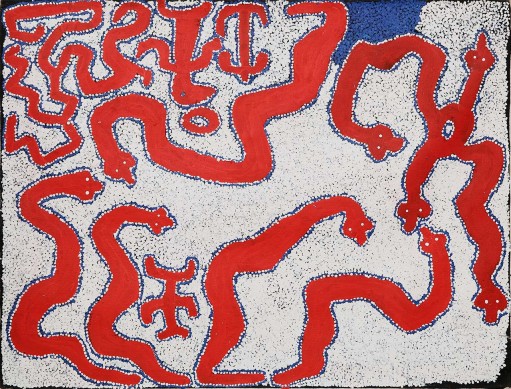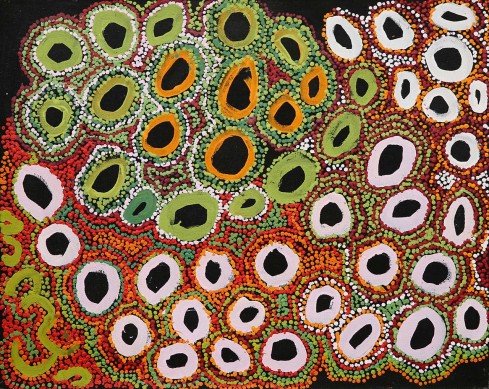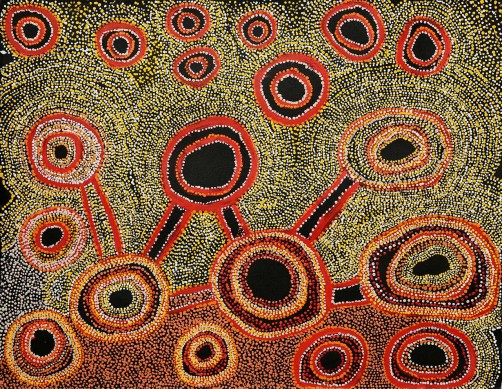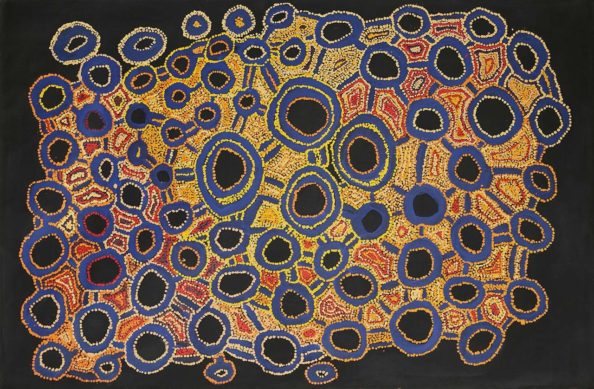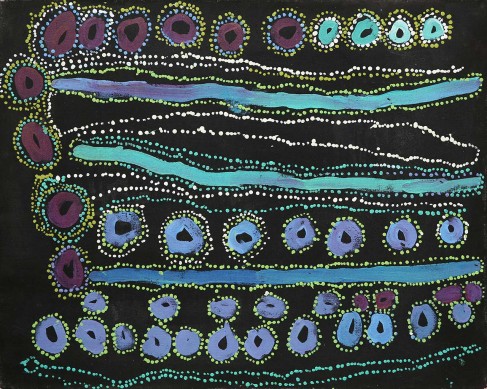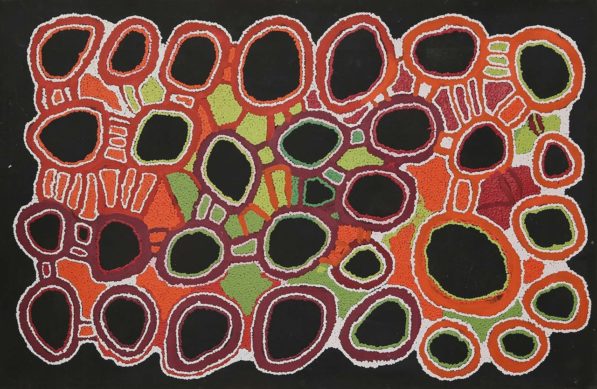Spinifex Artists 2014
Gallery 1
10 October – 7 November 2014
Spinifex Artists are based at Tjuntjuntjara in the Victoria Desert, to the north west of the Nullabor Plain in Western Australian. The disrupted history of their country includes the upheavals of the Maralinga nuclear testing programme that took place during the 1950s and 1960s. During that era the desert people were moved from their lands and resettled in missions towards the west. But these Pitjantjatjara people had deep roots into their traditional lands and were determined to return to them.
Confirmation of the Spinifex People’s rights came in 2001 when the group became one of the first Aboriginal groups in Western Australia to successfully gain Native Title rights to their lands. As part of the submission the artists painted intricate maps of their country to show cultural and social kinship ties to the great sites of the desert. These paintings were later bequeathed to the State as a collection held in the Western Australian Museum.
In 1997 the Spinifex people had established themselves at the tiny community of Tjuntjuntjara, just 200 kms from the Western Australia-South Australia border. The Spinifex Art Project that began as a cultural and legal response to the land claim subsequently took on the role of cultural maintenance for the Spinifex community with members continuing a close management and stewardship program of 55,000 square kms of their land. New bush roads have been created into otherwise inaccessible country, and regular maintenance trips led by custodians are made into outlying locations.
Former arts coordinator and community supporter, Louise Allerton, said –“The artists’ paintings are often produced when they are visiting their ancestral country. Their intricately composed canvases detail the journeys and deeds of Ancestors who created the sites in their Spinifex homelands. Documenting these sites, their relationships and stories, provides the artists with a way to record, promote and pass on elements of culture that are crucial to sustaining the long-term future and health of their people.”
Paintings include combined works by the men’s and women’s groups that show the interconnected custodial ties of the traditional owners.
View:

